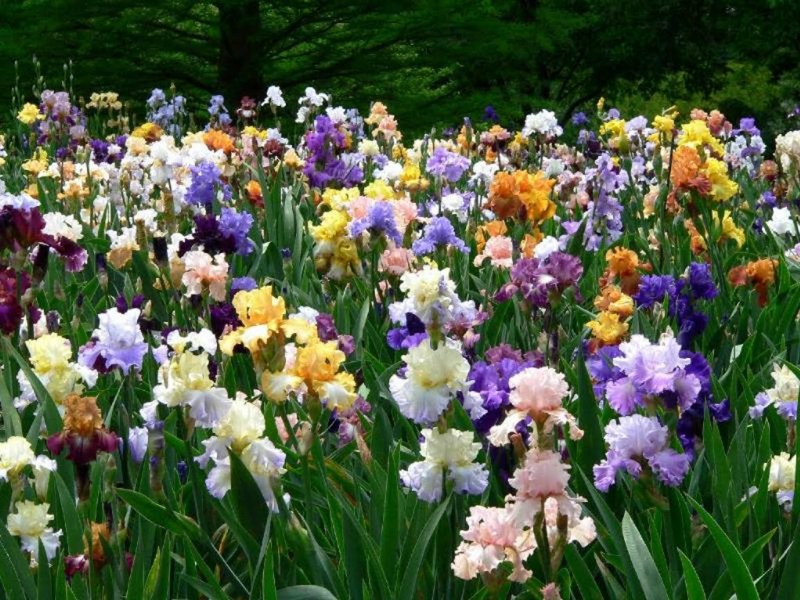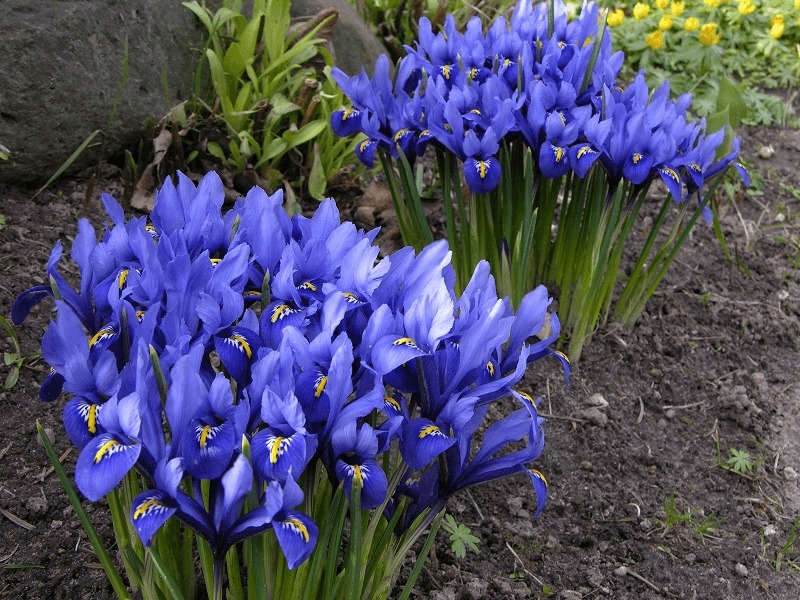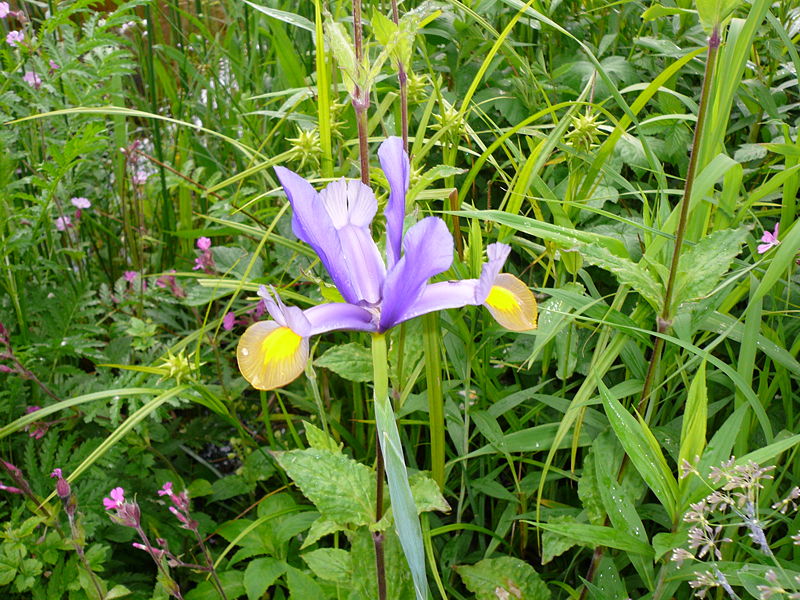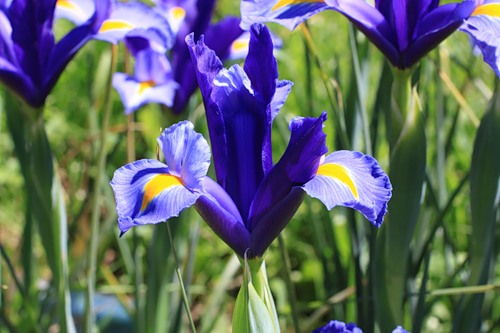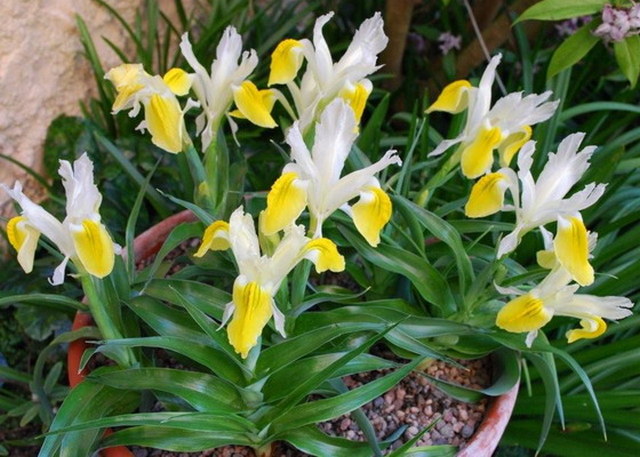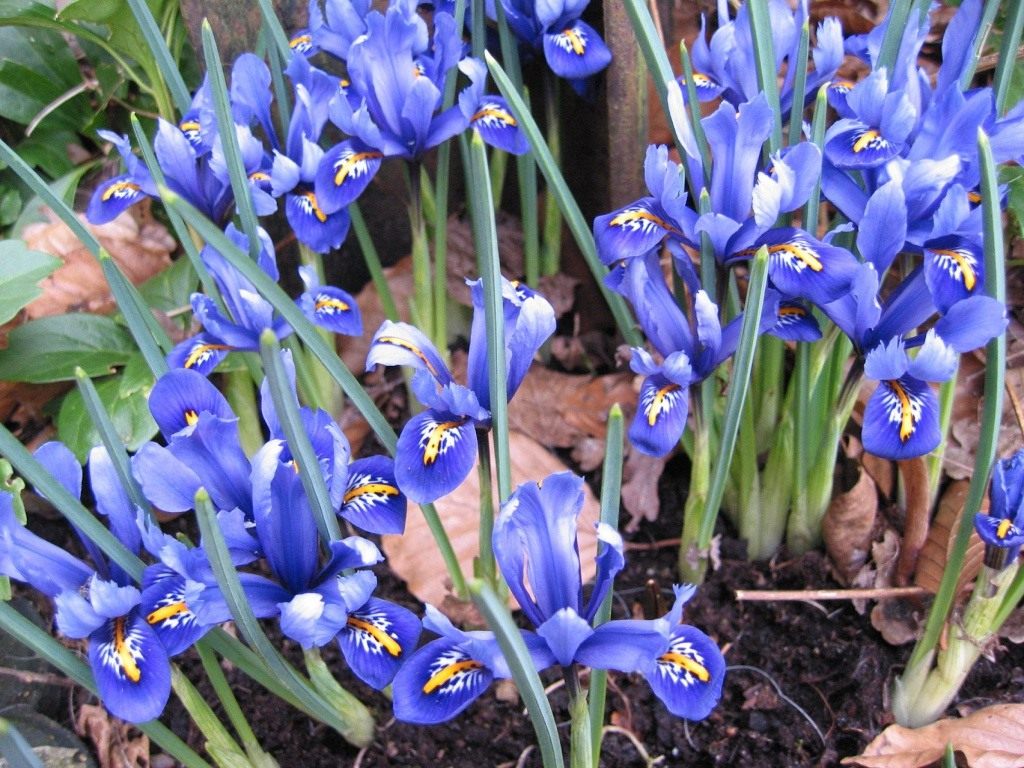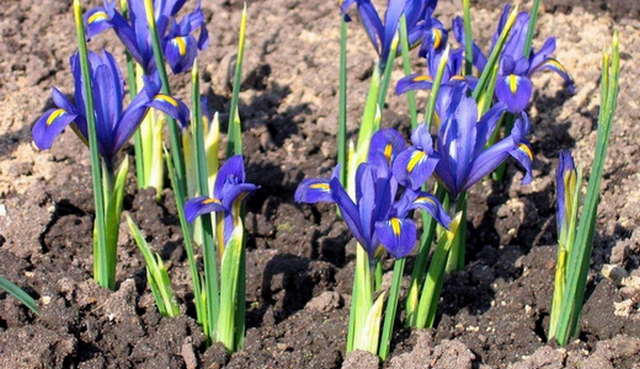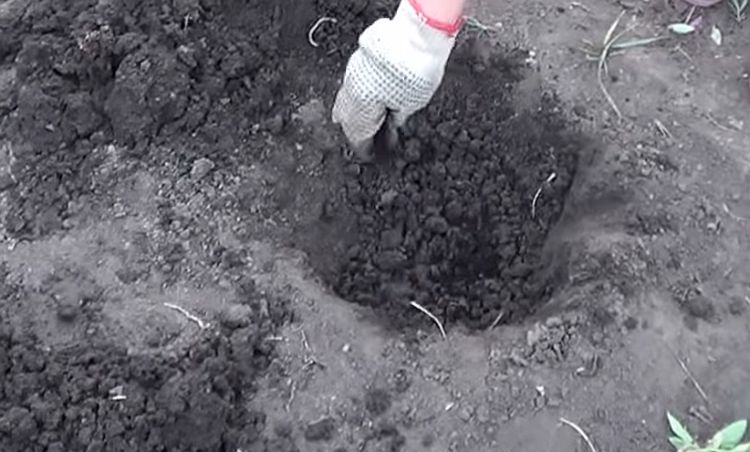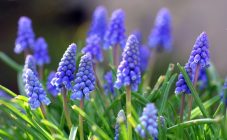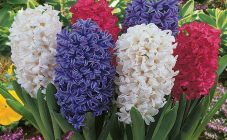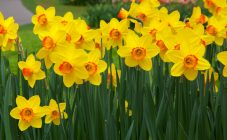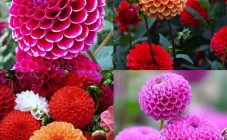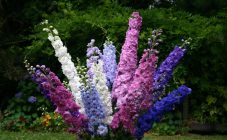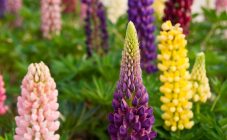Content:
Irises are very beautiful and romantic plants that have long captured the hearts and eyes of flower growers. The cultivation of these plants is not difficult, however, it is important to get acquainted with the features of this culture both for a novice gardener and for those who already have experience in its cultivation.
Bulbous irises: general information
Iris is a perennial plant of the Iris or Iris family. It received its name from the name of the ancient Greek goddess Iris, who is associated with the rainbow among the Hellenes. Thus, irises have been known since ancient times. The flowers of this particular plant were used on the coat of arms of medieval France, although there is a misconception that lilies are placed on it.
There are more than 800 species of representatives of this genus in nature, and only a few dozen are grown by humans for decorative purposes. Irises are plants that have their own rhizome, but there are also bulbous species. They are of the greatest interest to gardeners, since the plants from them have remarkable decorative and aesthetic qualities.
The growing area is unusually wide: flat areas of the temperate and subtropical belt. They can be found both in the Western Hemisphere and in the Eastern. However, irises do not grow wild in South America and Australia, which is due to the isolation of these continents and the ecosystems that have developed separately there.
These flowers are appreciated not only for their beautiful appearance, but also for other properties useful to humans. Iris oil is widely used and is used in the perfumery industry. Also, due to the high content of nutrients in the plant (organic acids, tannins), various parts of the plant have found application in folk medicine as expectorant and antiscorbutic agents.
Plant characteristic
Based on the impressive species diversity, as well as thanks to the constant work of breeders, the appearance of irises can be very different, as well as their botanical features. However, some of the characteristics of plants inherent in them are common to all species.
So, the stems have a maximum length of up to 120 cm and are single or bundle-shaped. The leaves of the plant have a characteristic shape - they are flat, resemble a knife or sword in shape and are collected mainly at the root. In irises, the root system is laid shallowly by 5-6 cm. The bulb is a small rounded scaly formations, whose diameter rarely exceeds 3 - 3.5 cm.
The flowering of these plants occurs in May - July (for central Russia). The flower is quite complex in its structure. The bud of the plant has several perianth lobes, some of which are external, and some are internal. They can be either monochromatic or multi-colored.
The pollination process is simple and is carried out by transferring pollen from one plant to another.Insects, mainly bees, act as "delivery vehicles".
Characteristics of species and varieties of crops
Iris bulbous species are grouped into three groups.
Xyphyum
This group consists of 6 species of wild plants, whose range is North Africa and the Iberian Peninsula. Over the years, breeders have bred hybrid varieties, among which the Dutch bulbous iris flower occupies a prominent place and the care of which is not burdensome. This variety has gained wide popularity among domestic gardeners.
Dutch iris
A perennial plant, reaching about 70 cm. There are also dwarf varieties with a peduncle height of no more than 20 cm, many growers plant them in pots at home. Dutch iris grows well outdoors as well, but it is very sensitive to excess moisture, which can easily rot the bulbs. It does not tolerate too cold winters, so the bulbs are dug up and stored in a cool dry place this season. One of the brightest representatives is the Blue Magic iris, whose flowers have a rich blue hue. By the way, he is the most frequently found plant of this family in personal plots. Other varieties may have other shades: blue, yellow, purple, etc.
In addition to Dutch irises, the Xyphyum group includes:
- English;
- Spanish;
- Tangier;
- Ordinary;
- Boissier;
- Broadleaf.
Juno
Juno is a genus of rather unusual and rare irises. Their main feature is that the growing season of the plant is very short - 2-3 weeks in spring. In the summer, Juno is at rest. It is worth noting that this plant is very thermophilic, therefore, in the conditions of central Russia, they are grown as annual plants.
Junos are undersized plants, their maximum height is 50 cm, but twenty-centimeter specimens are much more common. They bloom in spring, and under favorable weather conditions, flowering can begin even at the end of April. Shades of colors are also varied, but white and cream tones prevail. The most famous and popular types of this group:
- Caucasian;
- Wariley;
- Juno Fotsera;
- Iris Bukhara.
Iridodictium
Iridodictium is a very interesting representative of the iris family. This plant, which grows wild in Transcaucasia and Central Asia, is distinguished by the fact that its vegetation begins at the moment when the soil is still covered with snow, thus being a primrose. Iridodictiums are unpretentious and can grow in central Russia. By themselves, these are short plants, their length rarely exceeds the mark of 30 cm.The main varieties grown in Russia include:
- Net iris;
- Kolpakovsky's Iridodictum;
- Iridiodictium Vinogradov.
In general, this group is the smallest among all those presented above.
Bulbous irises: planting and care in the open field
The best place to plant an iris is a warm and dry place without strong winds. It is important not to allow direct sunlight to hit the plants; it is better to grow them in partial shade or even in the shade. The place must be dry, hills and hills are well suited.
The plant is not demanding on the composition of the soil and can successfully grow on almost any kind of soil. Sandy and rocky ground is also not an obstacle to the growth of irises. However, it is important to periodically apply phosphorus-potassium supplements, especially at the beginning and end of the growing season.
Despite the fact that the plant does not tolerate excessive moisture, watering must be done regularly, especially on hot days. However, after the end of flowering, it needs rest and does not need to be specially watered. At this time, the plant is practically not looked after.
They are propagated mainly by dividing the bulbous nest. To do this, in the fall, the plant should be dug up and the daughter bulbs should be separated from the mother bulb and planted in open ground.
Let's also admit the variant of reproduction of irises by seeds. However, this method is less preferable due to its laboriousness and a long waiting period for obtaining an adult plant.
Major diseases and pests of culture
The main danger to the culture is bacteria that have settled on the bulb, which lead to its rotting. You can detect the problem even at the stage of storing the bulb. The rotten area is cut out, and it itself is placed in a weak solution of potassium permanganate for a day. Prevention of disease is compliance with the rules for storing the bulb.
Various kinds of microorganisms can cause yellowing of foliage. With the timely detection of yellow spots on the leaves, the plant should be treated with a fungicide.
Among pests, irises are most affected by slugs, the method of dealing with which is simple: dusting the soil next to the plant with superphosphate.
In the spring, the plant can be eaten by the caterpillars of the Scoop butterfly. To combat them, granosan is introduced into the soil.
Agricultural technology of cultivation
You can buy bulbs in winter or early spring. The optimal time for disembarkation is April - May. This is true for Dutch irises, Iridodictiums and Juno are planted in the fall. Before planting, it is important to treat the bulbs with a fungicide for an hour and then dry.
For planting iris in open ground, it is necessary to prepare holes. They should be shallow - about 6 cm. After planting, the soil should not be watered immediately.
Iris Dutch should be dug up in the fall. Rotten and damaged bulbs should be selected, and healthy ones should be placed in a dry, warm place until next spring.
In almost every household plot, you can see these wonderful flowers, outwardly similar to multi-colored butterflies. Therefore, bulbous iris, the cultivation and care of which is not difficult, is so loved by gardeners!
